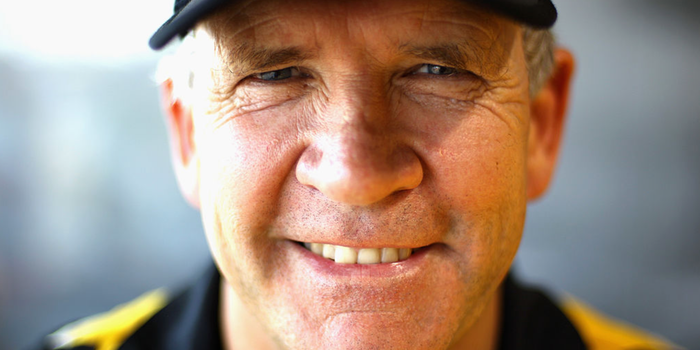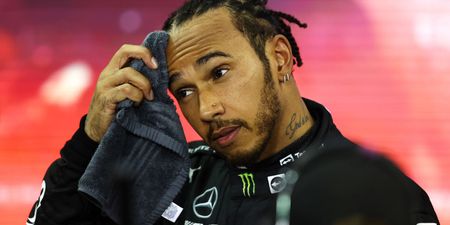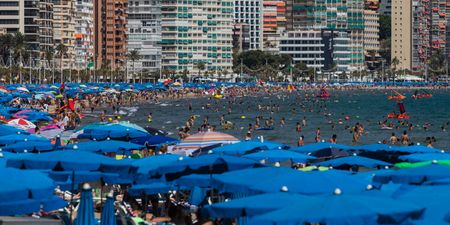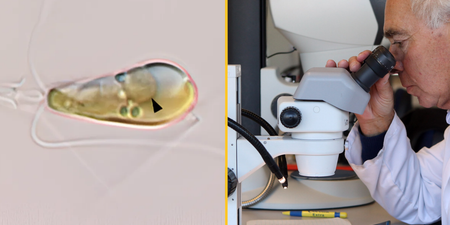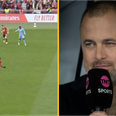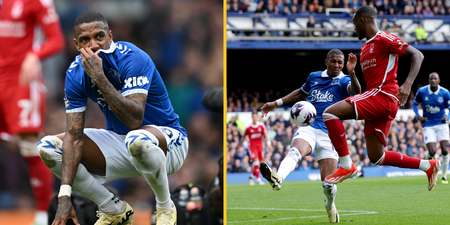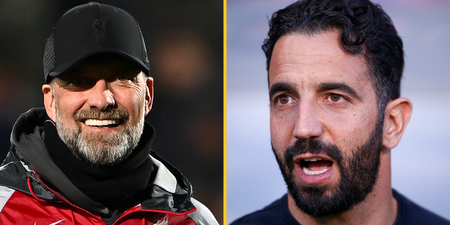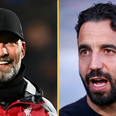As kids, a lot of us dream of growing up to be a pilot, but few of us ever achieve that dream.
Ahead of the Red Bull Air Race at Ascot on August 13-14, we caught up with Nigel Lamb, one of the most accomplished pilots in the world right now – he won the Red Bull Air Race title in 2014 – and the current Master Pilot representative of UK.
High-flying Lamb was born in Rhodesia (now Zimbabwe) and his father, a Royal Air Force (RAF) fighter pilot in World War II, was hugely influential in his decision to chase a career in the cockpit.
A childhood ambition to join the Rhodesian Air Force was finally realised at the age of 19, something Lamb recalls as possibly the standout moment in his life.
He spent four years flying jets and helicopters in the Air Force, before moving to England in 1980 to join an aerobatics team. 36 years later and Nigel Lamb is still living the dream as a display pilot, chalking up a (literally) dizzying 1770 displays in over 30 countries.
We got the lowdown on what has been an almost unreasonably action-packed career. Here are six things most people don’t know about being a pilot.
1) There will be terrifying experiences…
Nigel: I’m a student in the Rhodesian Air Force and I’m in a Vampire jet: single-seater, no ejection seat, low-level, training battle formation. My instructor was with another student colleague of mine in another aeroplane; we were flying together. I had an engine fire warning light. I’m low-level in Africa, in the middle of nowhere. I followed the procedure, which is basically to bail out because there is no ejection seat.
Except nobody knows how to bail out. The Vampire is a twin-boom aircraft, so the tail is not one tail. It has two booms going backwards, meaning anyone bailing out of one of those things is probably going to hit the tail plate. There are all sorts of horror stories.
You have a plan and you have to just try and execute it. In my plan I hadn’t thought about being very low-level, so essentially I didn’t have the speed or performance to do what I had thought was going to be the best way to get out.
Anyway, I had to do a false landing. I actually landed in a very small field in the middle of nowhere. You shut the engine down in case the whole thing is going to blow up and then you glide down and you land, and I was just extremely lucky to go through some small trees before touching down. I slipped to a halt in this field and survived.
2) There will be close shaves…
Nigel: I left the air force when I was 24, I came to England and I’ve been a professional display pilot since 1981. I’ve done not far short of 2,000 public displays. I’ve never frightened myself on the Red Bull Air Race track, in either a practice or a race. In fact, I’ve never had a near miss in an air show or Red Bull Air Race at all.
What people don’t realise is that it’s the in-between those things that you end up with your scary moments. The planes we fly are only suitable in daylight hours. We have no instruments to fly at night or in clouds. That means if the weather is bad and there are mountains and rain, you can end up pushing into clouds in not bad weather and sometimes that can be pretty scary. The dodgy moments come when you’re getting the planes around Europe, to and from the air shows.
3) You’ll see a lot of the world…
Nigel: It’s a phenomenally difficult thing to do – [winning the Red Bull Air Race]. I won it in 2014 after a really long journey, too. You’re always striving to try and change something and get better. Sometimes it works and other times it doesn’t.
It’s the ultimate man and machine challenge I’ve ever participated in. Me and my team are looking at it and thinking about how we can avoid losing 0.5 of a second, because these races are lost by tiny, tiny fractions. You can lose a race by a hundredth of a second, literally. It’s so competitive and a phenomenal challenge.
I’m in my 60’s now, I don’t know how many races I’ve been in over the years. We’ve flown in some absolutely iconic places. We’ve flown in the middle of Istanbul a few times, in New York City – right next to the Statue of Liberty. We’ve flown in Budapest and London, next to the O2. You’re not aware of your surroundings when you’re racing, but you come away thinking “I can’t believe I’ve been racing in that city”.
35 countries around the world I’ve raced in. It’s an amazing way to see the planet.
4) It’s all about man and machine…
Nigel: I’ve never become emotionally attached because it’s almost like a tool in the tool box. It’s a machine, a machine that you modify and change, but it’s built for purpose.
My father flew fighters in the RAF. He was born in Newcastle, trained as a fighter pilot in 1940 and flew all through the war in various fighters. To be flying a Spitfire, exactly the same kind of aeroplane he flew, was amazing. I’ve flown a MH434 – a very famous Spitfire – loads over the last 20 years. To be flying something like that, which is something we made models of when we we were kids and read about in all the books and the comics, is very, very special.
The one I fly now – the MXS-R – is the most beautiful handling aeroplane I’ve ever flown. These aeroplanes are different from the second world war fighters because they are designed for nothing but handling. They are the Formula One of the air, designed to do nothing else except aerobatics and in our case racing. It’s the ultimate pair of wings to strap on your back as you go and enjoy your three-dimensional freedom. You don’t have to think about what your doing with the controls – it just takes your where you want to go.
5) The Red Bull Air Race is a bit like skiing, sort of…
Nigel: If you imagine downhill skiing, where someone on skis is going through gates on the side of a mountain – imagine sitting that track anywhere, with air-filled pylons, and having 14 aeroplanes race through those gates. Man, machine, clock: it’s both spectacular and very, very intense. It’s also very easy to understand the rules and you don’t have to know anything about flying to see something which is exciting from a competitive point of view, as the margins are so small.
In Ascot you’ve got the most phenomenal setting, a race course with all this history of horse racing now being used by aeroplanes. They’re taking off and landing on the grass right in front of the crowd. It’s fantastic.
6) Flying, it’s not as difficult as you think…
Nigel: Contrary to popular belief flying is phenomenally simple. Anybody who can drive a car and likes being the operator of a machine would find flying very simple. The basic fundamentals are very easy. Like with cars there are so many diverse disciplines, but the basics of operating a machine is so fundamentally easy.
What drives me is that ever since I was a tiny kid, I would go to the top of a mountain, look over a cliff and almost feel a fear of heights because, as I’ve come to understand, it’s probably because I wanted to launch myself and fly like a bird. You just want to put your arms out and fly – soar – and as a kid I always, always wanted to be in the air. To be able to go on to live that dream, not being shackled to the earth by gravity, being in three dimensions enjoying that freedom of looking down on the earth is always where I wanted to be. To spend a lifetime doing that has been amazing.
To grab your tickets to the Red Bull Air Race at Ascot, hop over to the Air Race site.
